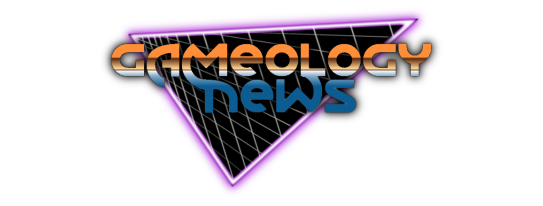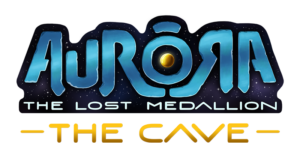‘Decay of Logos’ – PC Review
6 min read
“Dark Souls Meets Breath of the Wild, a Match That Shouldn’t Have Been”
As a veteran to the Dark Souls series, I was happy to see another souls-like game make its way into my lap, and one with an interesting and promising presence to boot. However, my excitement soon gave way to frustration as Decay of Logos showed what it had to offer. Over my experience with this game, I learned very quickly that there were elements from the series it so desperately tries to emulate that are missing entirely or executed so poorly that it actually hinders the experience the developers were aiming for. The entire game suffers as a result. That’s not to say that everything about this game is negative, but the negative aspects outweigh the positives by an overwhelming margin. Despite all of my negative attitudes and thoughts of the game at launch, since revisiting it for this review, many of the extreme problems have been rebalanced and reworked. I commend the team behind the game for fixing these glaring issues. Even still, I find Decay of Logos is incredibly frustrating in its current state and will continue to be this way because many of the problems are inherent to the game’s overall design.
The first problem I have becomes apparent in the settings menu with the keyboard controls. Granted, the souls-like series usually plays better with controllers, and that controllers are more intuitive for games like these. Decay of Logos offers an option to play with a keyboard and mouse, and those controls should be either equally intuitive, or able to be rebound. Instead, the controls for keyboard and mouse have keys performing the same tasks. Sprint, crouch, and walk are in very odd places when thinking about what comes naturally to most other games, with sprint being bound to the Alt key, and walk being bound to Shift. This wouldn’t be so bad if the last button of the three, the one for the crouch and slide function, which can be used to evade attacks, is bound to Ctrl, making what I would argue to be the most important key of the bunch simultaneously the hardest to utilize. These need to be customizable as many games on PC allow.
The world of Logos is very bland as most of what I experienced was caves, grasslands, and ruins. Ada, the protagonist, draws heavily from the aesthetic of the main character in Breath of the Wild, except the positioning of the elongated ears is a very odd feature as they just stick straight out, where that characteristic in every other fantasy medium is pointed straight up and looks off to anyone familiar with the elves and other races found in fantasy settings. Later in the game you’ll find a race of large green men that have very disproportionate heads that are laughable to see. Apart from that, the rest of the world design seemed basic and on par with what you would expect in a fantasy setting.
Upon receiving control of the character for the first time I could feel something was off. The character controls something closer to a Rockstar game, sluggish and slow, rather than that of any souls-like. It makes maneuvering in combat difficult, especially against larger foes where hit boxes need to be avoided. Turning occasionally causes the character to move forward slightly before executing the desired movement. These problems are mostly resolved while locked onto an enemy, although this can also lead to a problem. Engaging a specific bee enemy in melee combat can cause the player’s lock-on and camera to go underneath the bee, making you look straight up at the sky and is jarring as well as almost impossible to deal with given the combat and movement.
Amplify Creations says the Decay of Logos has minimal hand-holding in its design philosophy. This would be fine if more information was provided in game through lore bits and explanations. Most of what I learned throughout my time in Logos was through tooltips that would pop up when I died or loaded into a new area. These tool tips provide the player with the information required to understand how to utilize some of the game’s main mechanics such as your Elk companion.
One of the features that Logos boasts is an Elk companion that is supposed to help the player fight, move, and carry gear while journeying the world. Due to the minimal “hand-holding” that the game has however, I quickly became frustrated that my companion would simply ignore fights, barely move with any urgency while mounted, and was hardly functional. Only after I had died and a tooltip popped up that told me I must bond with the Elk in order to have him fight with me did I understand that it wasn’t just buggy AI or an incomplete feature. I found this companion to be useless for the majority of my time playing the game.
Souls is a very popular and tricky genre to have emerged over the years as the formula of a more hardcore and skill required game, but one of the aspects about the franchise is how the intense level of difficulty is achieved. This is one of Decay of Logos’s biggest failures to implement. As the player progresses through the game there are a variety of enemies you’ll encounter. Some of these enemies will barely scratch you, while others will take you down in one shot. For example, early on you’ll find tree men that wield a sword. The first one you should find will barely hit you for any damage and can be easily dispatched. Passed the first gate, you find more of them, completely identical in appearance. These particular enemies will kill you in one shot. Perhaps there was some underlying system in play such as the fatigue and resting system that caused this issue, but if that had caused such a massive difference in survivability it’s said nowhere that could be easily found or discovered. Needless to say, this became very obnoxious to deal with as there was no clear indicator of which enemies were major threats and which ones were merely grunts, aside from the very obvious large or armored enemies.
The first large enemy that the player encounters is a large green man like the ones mentioned earlier. He wields an axe and has a stomp attack that hits all around him and will instantly kill Ada like most other enemies. While I understand that this is an enemy that is more than likely intended to be revisited with better stats and gear, having it just one shot the player like a standard enemy found in the same location of the overworld gave me a sense that it was meant to be fought this early. If it was, having a boss simply down the player in one move with a radial attack, where that boss requires several dozen hits to defeat, is frustrating to say the least. It requires a level of perfection that the Souls series inspires, but with the clunky movement it becomes exasperating to maneuver in and out of the range of this stomp attack.
On the topic of combat, in Decay of Logos, you have a light attack, a heavy attack, and a parry. The parry system in this game is actually decent when it needs to be used. Against melee weapon wielding enemies, it works quite well. That being said, most enemies that I encountered during my playtime were easily dispatched by mashing the light attack key. Every attack with the sword wound up staggering the enemies so they couldn’t recover, resulting in them being perma-stunned while I recovered enough stamina to swing again until the enemy was killed.
When I first expressed my opinion of Decay of Logos to friends, I remarked how this game needs to remain in alpha longer before moving to the beta phase. I was told that it was only a week to release and I was actually shocked with disbelief. With the amount of balancing, patching, and polishing that needs to happen, I can honestly say I was stumped at how a game could release in such a state. Decay of Logos is a game with an interesting premise, but fails on the execution.



